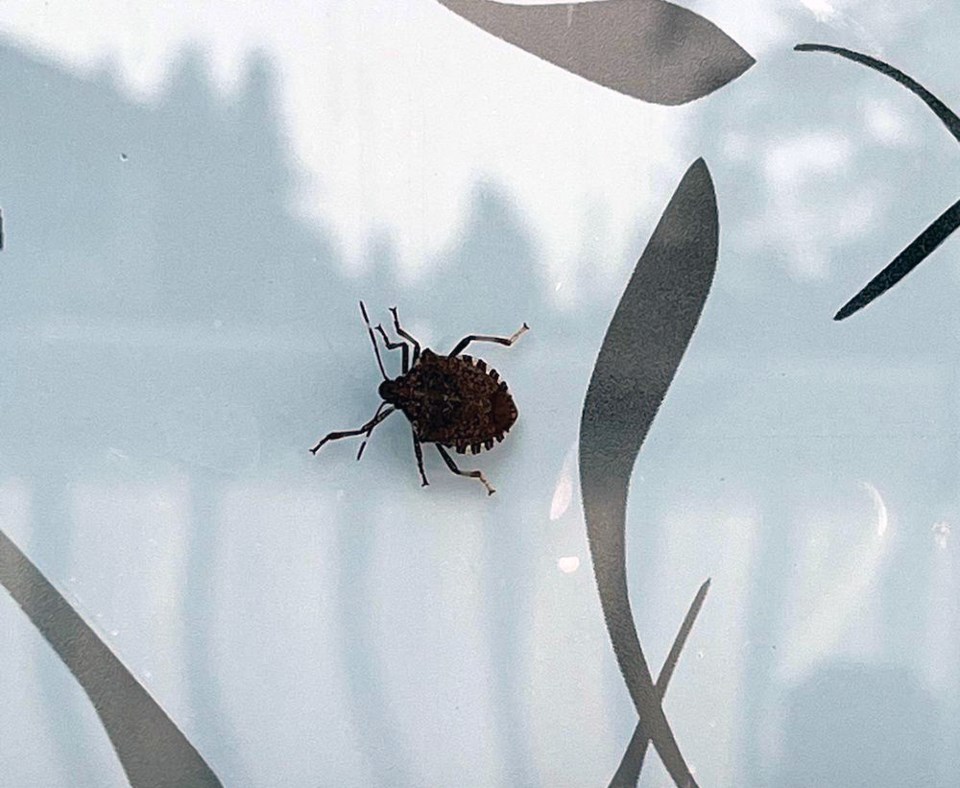They're creepy, crawly and have appear to be invading Coquitlam homes.
Called a "stink bug" — or brown marmorated stink bug — because they emit a strong odour when crushed, the shield-shaped critters appear to be more frequent visitors this year due to unprecedented warm fall weather.
One Coquitlam resident is getting a bit fed up with the insect, posting on social media that his house has been plagued by them.
Kevin Cole told the Tri-City News he finds the bugs "creepy," and he and his wife have killed dozens in the last few weeks.
"These damn bugs are EVERYWHERE!," wrote Cole on a Coquitlam social media page about the buggy nuisance.
"What can we do if anything to stop them from getting in our house other than keeping all windows and doors closed all day and night?
"We’ve killed so many. I even had them fly onto me in Port Kells where I work," added the 30-year-Coquitlam resident and machine shop worker.
'Horrible' bugs an invasive species
His post, as of this publication (Oct. 19), attracted more than 100 comments with others sharing their stories of the ugly bug.
One poster said the bugs were covering their window screens and living in their kitchen cookware despite efforts "to keep them outside."
"They are just HORRIBLE and the air smells like them, and so did my laundry. I hope this does not happen next year!"
Cole said he even found a stink bug in his jeans pocket and one flew into him when he walked into his Port Kells office.
"Ladies there kind of chuckled," he told the Tri-City News.
According to the B.C. government, stink bugs are an invasive species. Originally from Asia, they hitchhiked a ride to North America, likely in a shipping container.
First detected in North America in Pennsylvania in 2001, the stink bug has since spread throughout most of the United States.
It is a "very serious pest" that feeds on more than 100 different plant species, according to the province.
In 2015, it was first found in B.C., and has been moving into the Okanagan, the Fraser Valley and Metro Vancouver.
"We've had a particularly warm, dry fall, which are perfect conditions for this stink bug," said Gail Wallin, executive director of the Invasive Species Council of B.C.
Although population counts aren't readily available, the unwelcome intruder is earning notice across the Fraser Valley, Metro Vancouver and parts of the Okanagan, particularly Kelowna.
"We don't have the science on that yet, but what we do know is we're getting way more reports this year," Wallin said, adding that could also be because people are spending more time outside and paying attention.
Vacuum them up, don't crush them
The B.C. government advises residents looking to get rid of the bugs to remove them by hand, sweeping or with a shop vacuum.
Unfortunately, with the cold weather, the bugs are most likely looking to get into homes to over winter.
To keep them from getting into the home, residents are encouraged to seal off any access points.
This means inspecting the outside of your home for easy access points, such as:
- Around siding and utility pipes
- Behind chimneys
- Underneath the wood fascia or other openings
Seal any cracks and holes that are found using a good quality silicone or silicone-latex caulking.
Turning off night lights, removing water and food sources are also a good idea to deter the bugs.
The use of insecticides for controlling brown marmorated stink bugs in the home is not recommended.
Don't crush them because they'll give off a bad odour.
Meanwhile, Cole said he's seen fewer stink bugs in recent days and hopes they'll hibernate and go away.
Life cycle of the stink bug
However, that's not likely to be the case, according to the B.C. government's website.
Here's what the website says about the stink bug life cycle:
- Adults overwinter inside buildings or in protected areas and emerge in early spring.
- Each female can lay up to 400 eggs throughout the summer on host plants, resulting in overlapping nymphal stages.
- Eggs hatch in 4–5 days; nymphs mature in about 5 weeks depending on temperature.
- One to two generations per year are reported in the United States and up to 6 generations in Asia
- with files from The Canadian Press





